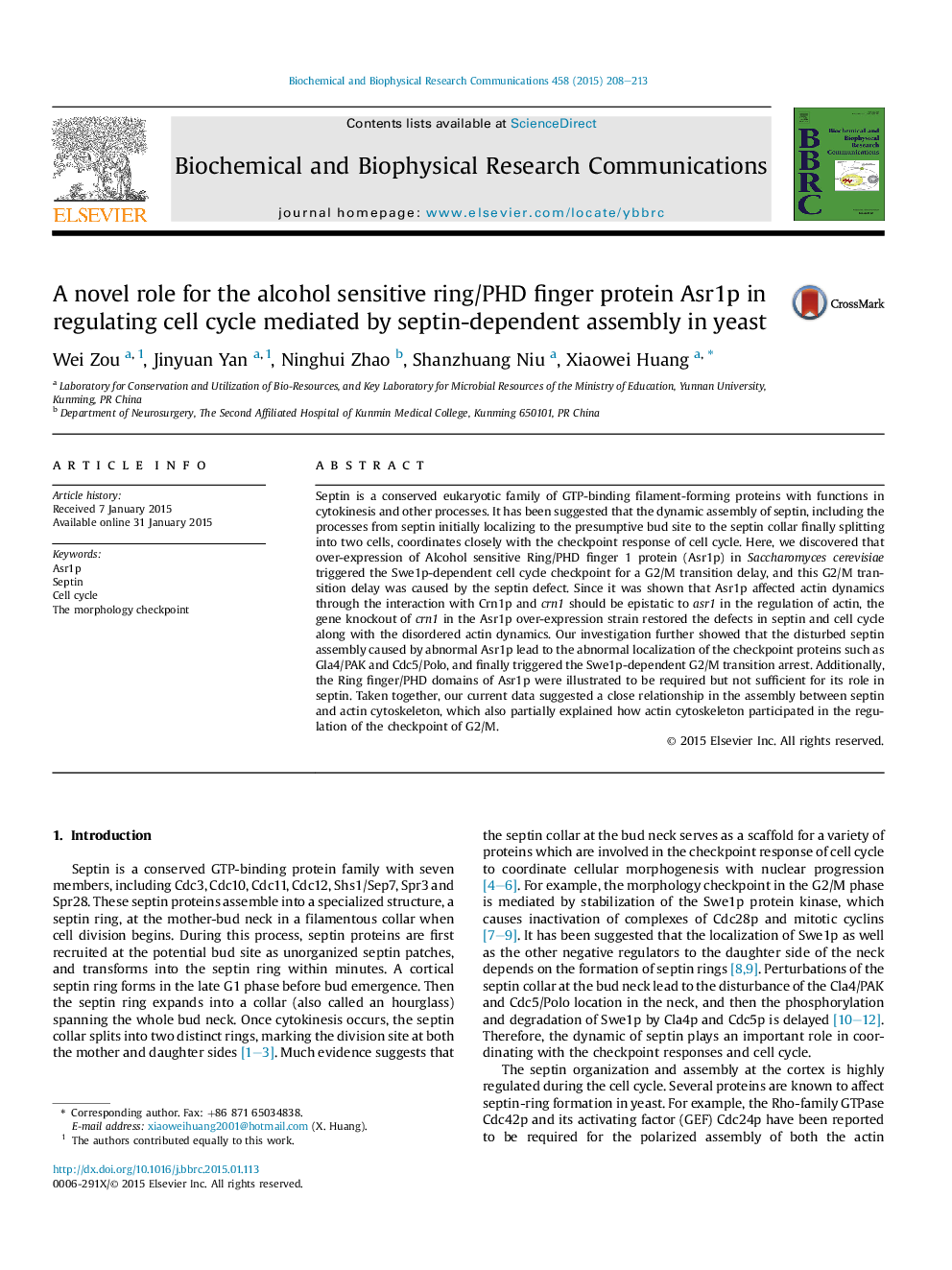| Article ID | Journal | Published Year | Pages | File Type |
|---|---|---|---|---|
| 10752506 | Biochemical and Biophysical Research Communications | 2015 | 6 Pages |
Abstract
Septin is a conserved eukaryotic family of GTP-binding ï¬lament-forming proteins with functions in cytokinesis and other processes. It has been suggested that the dynamic assembly of septin, including the processes from septin initially localizing to the presumptive bud site to the septin collar finally splitting into two cells, coordinates closely with the checkpoint response of cell cycle. Here, we discovered that over-expression of Alcohol sensitive Ring/PHD finger 1 protein (Asr1p) in Saccharomyces cerevisiae triggered the Swe1p-dependent cell cycle checkpoint for a G2/M transition delay, and this G2/M transition delay was caused by the septin defect. Since it was shown that Asr1p affected actin dynamics through the interaction with Crn1p and crn1 should be epistatic to asr1 in the regulation of actin, the gene knockout of crn1 in the Asr1p over-expression strain restored the defects in septin and cell cycle along with the disordered actin dynamics. Our investigation further showed that the disturbed septin assembly caused by abnormal Asr1p lead to the abnormal localization of the checkpoint proteins such as Gla4/PAK and Cdc5/Polo, and finally triggered the Swe1p-dependent G2/M transition arrest. Additionally, the Ring finger/PHD domains of Asr1p were illustrated to be required but not sufficient for its role in septin. Taken together, our current data suggested a close relationship in the assembly between septin and actin cytoskeleton, which also partially explained how actin cytoskeleton participated in the regulation of the checkpoint of G2/M.
Keywords
Related Topics
Life Sciences
Biochemistry, Genetics and Molecular Biology
Biochemistry
Authors
Wei Zou, Jinyuan Yan, Ninghui Zhao, Shanzhuang Niu, Xiaowei Huang,
